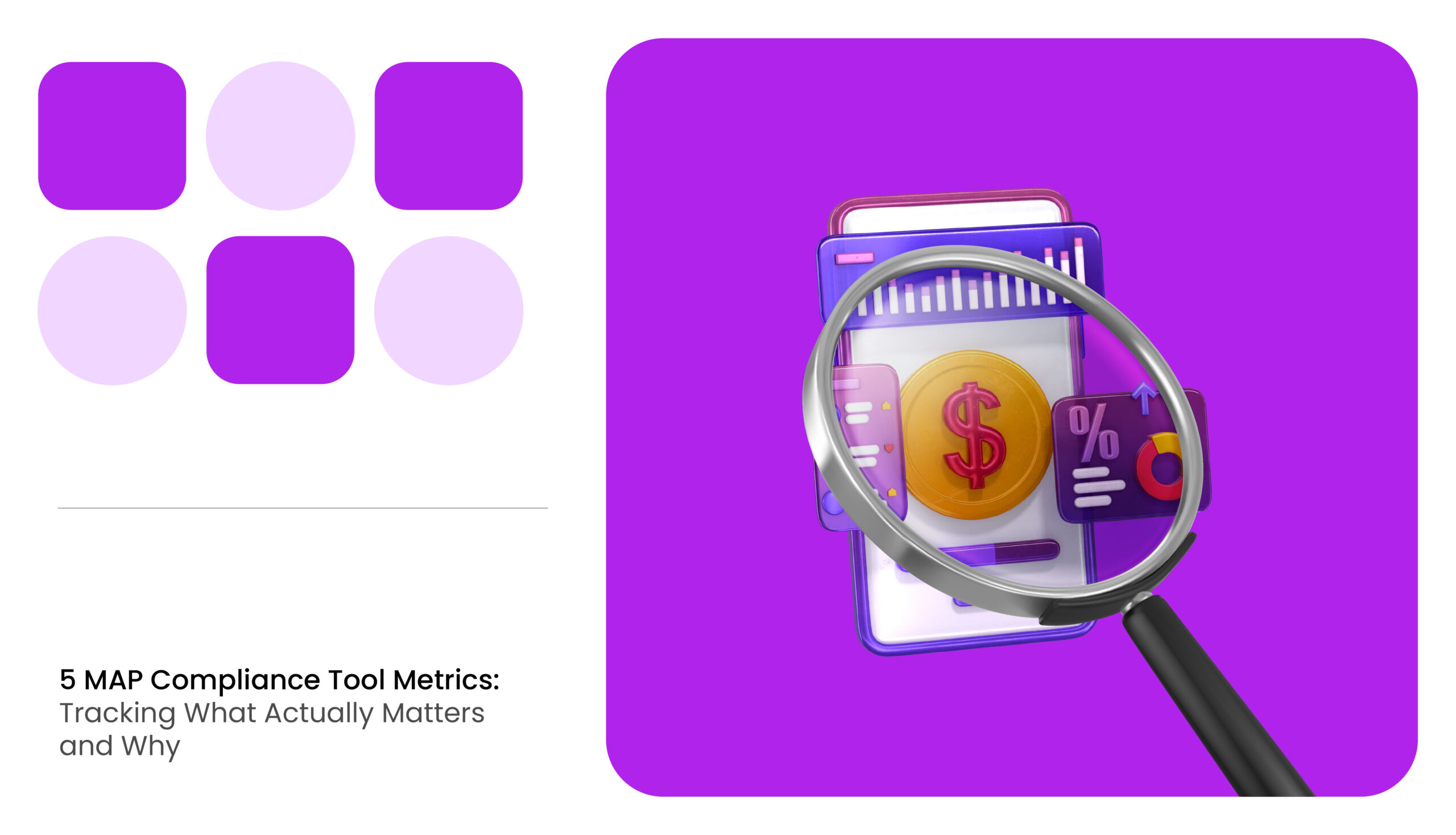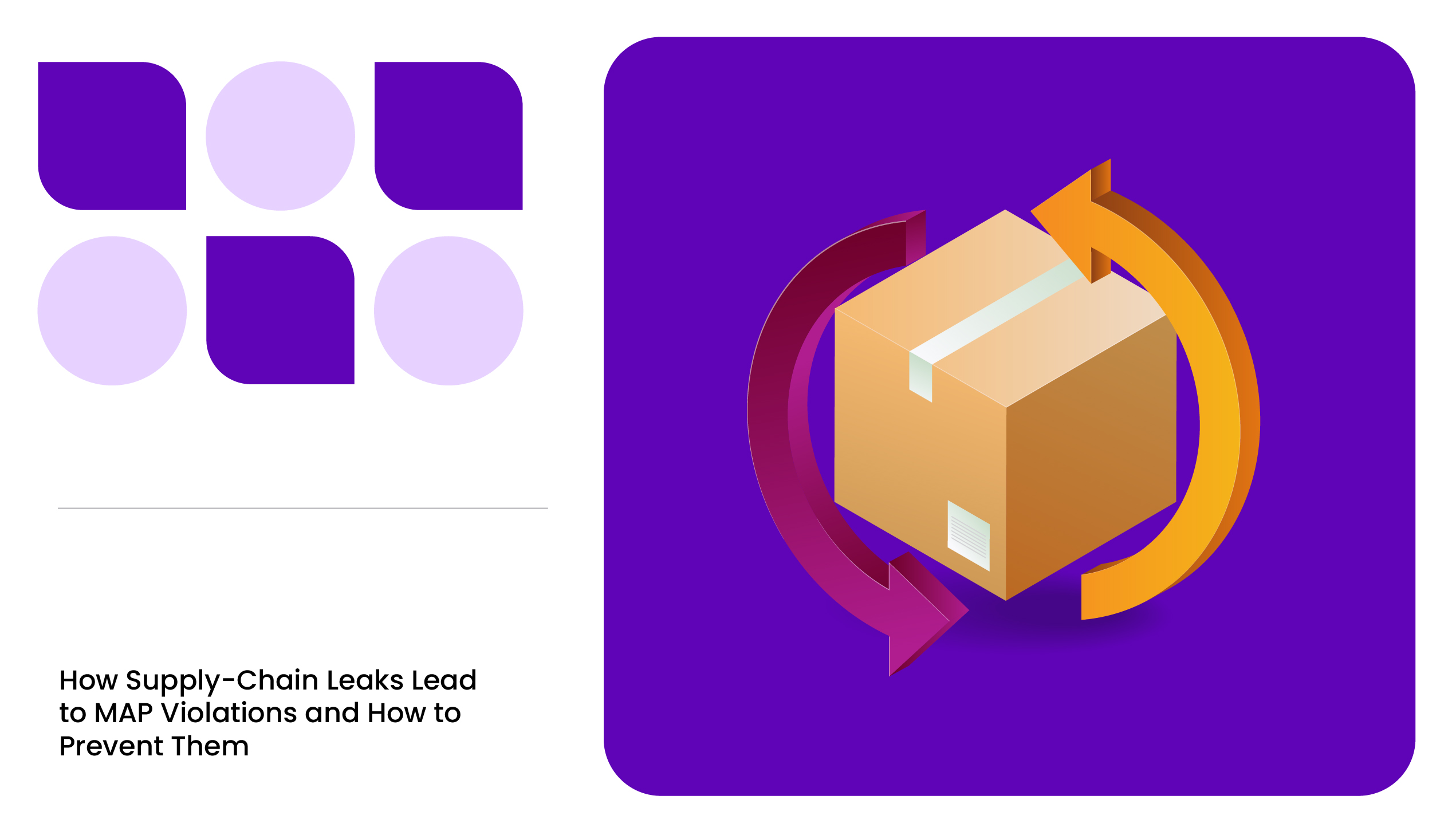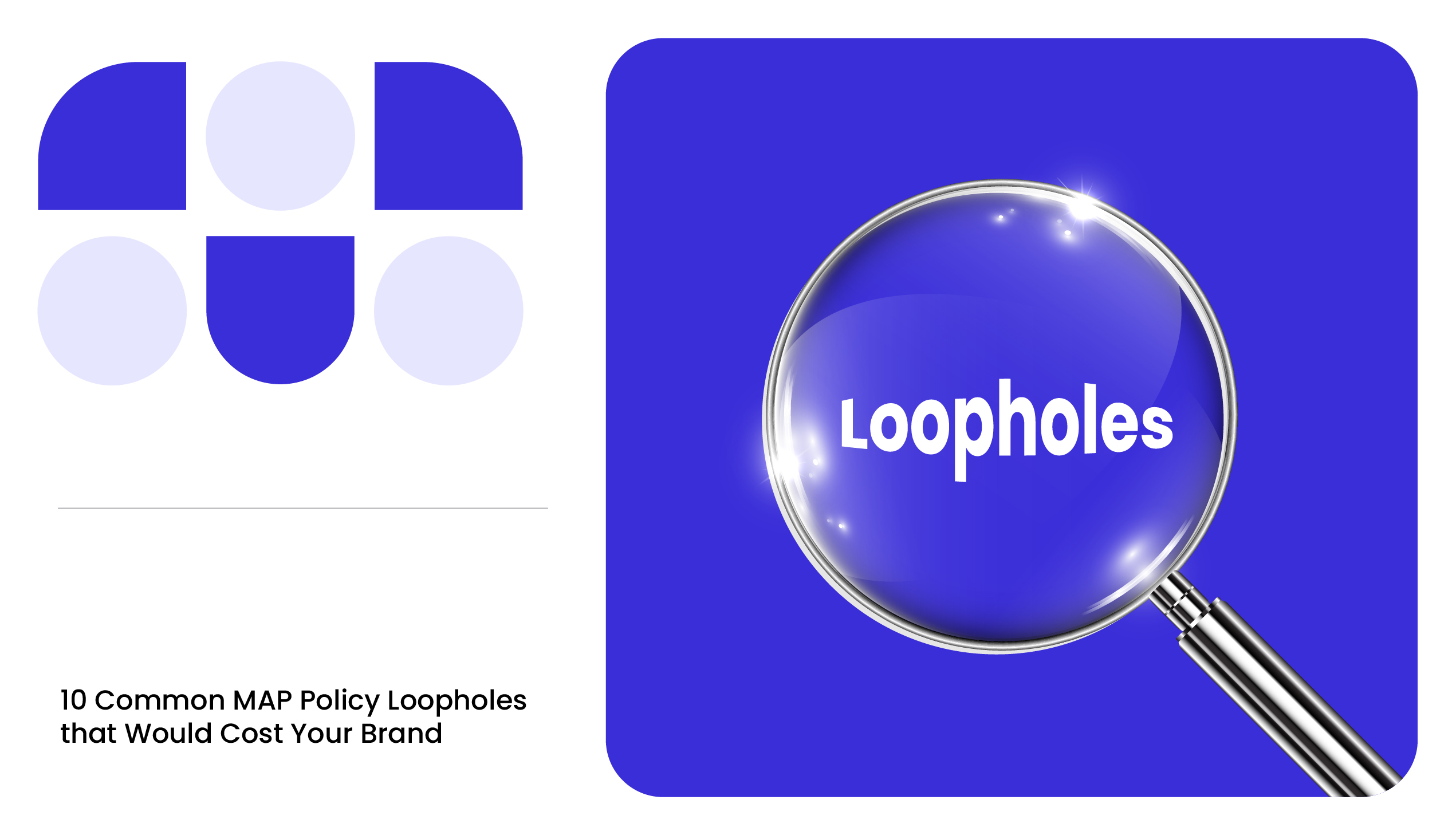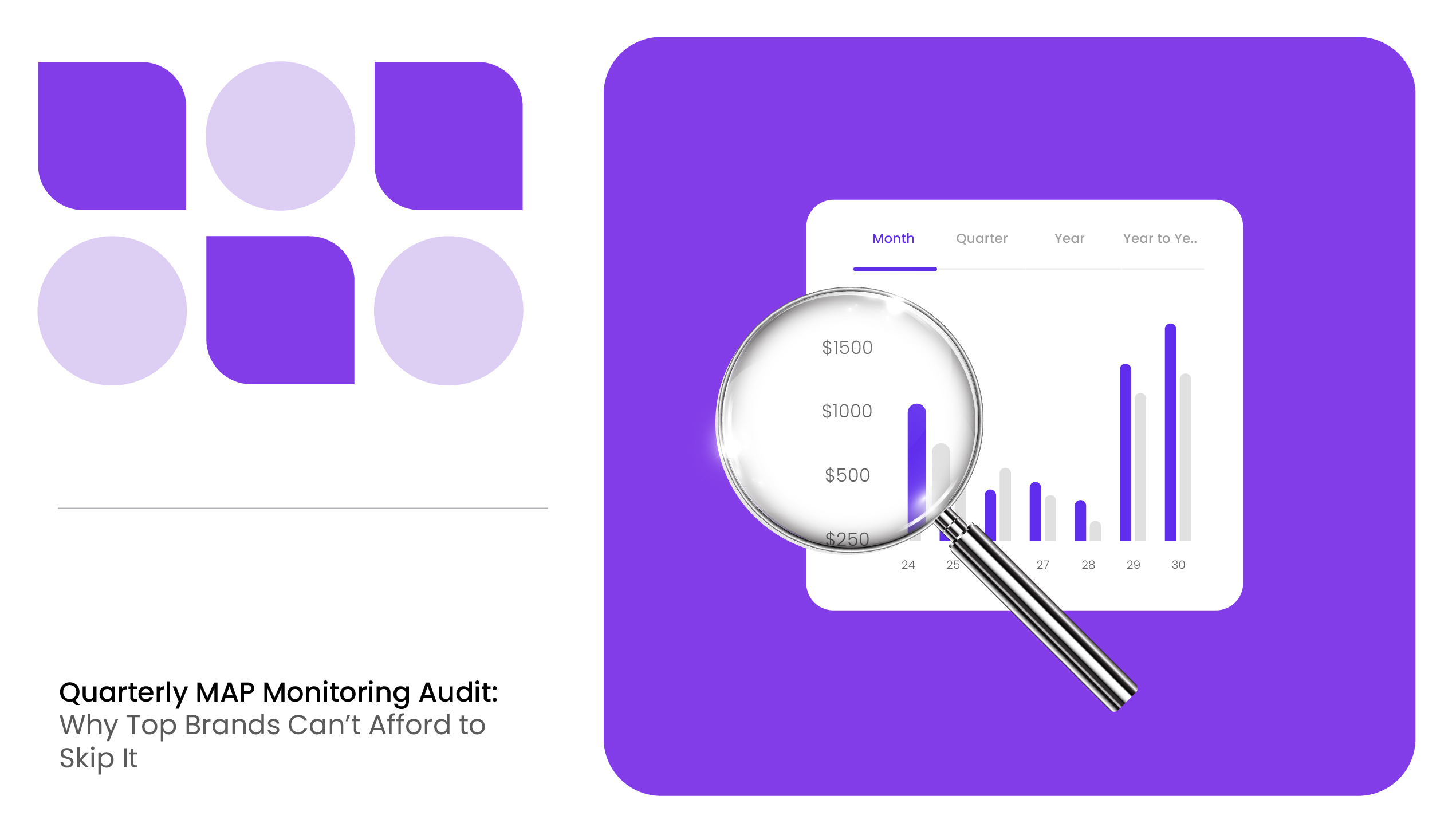Pricing isn’t just a number; it’s a signal. A signal to your customers about brand value, to your resellers about rules of engagement, and to your competitors about market discipline. And when you don’t have a Minimum Advertised Price (MAP) policy in place, followed diligently, those signals break down, causing price wars, channel conflict, margin loss, and damaged brand perception.
According to research by Harvard Business Review, unauthorized resellers violated MAP policies about half the time, causing price erosion and marketplace revenue loss.
That’s where a good MAP compliance tool comes in. However, what is more important than just flagging violations is what you do with the data.
To run a truly effective MAP program, you need to focus on the MAP compliance tool metrics that drive real business decisions, and this blog is all about it.
5 MAP Compliance Tool Metrics
Here are the five MAP compliance tool metrics that actually matter and why they’re critical to your pricing strategy, revenue protection, and reseller discipline:
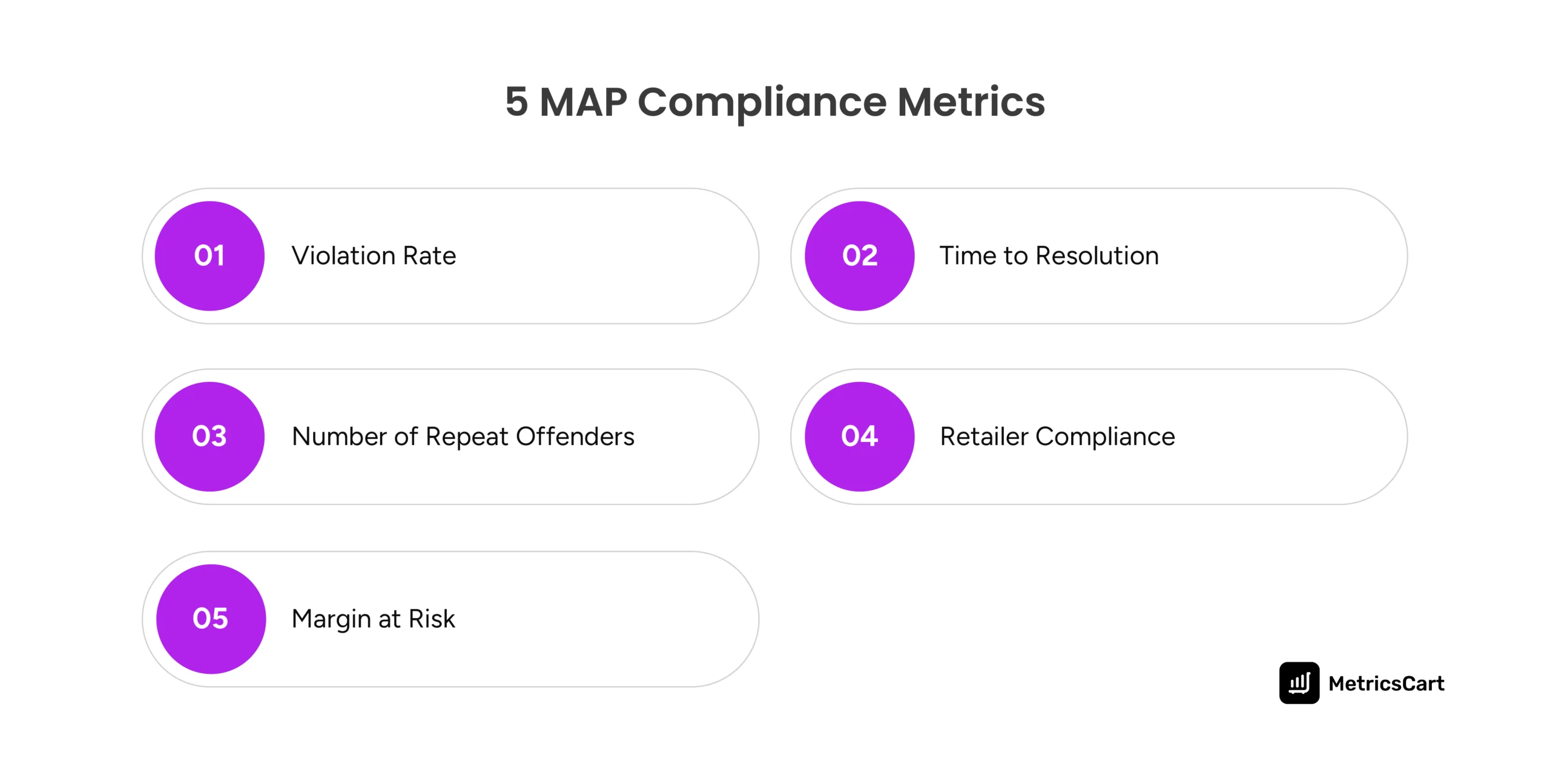
1. Violation Rate
Violation rate is the percentage of your monitored SKUs that are being advertised below your MAP at any point in time. It gives you an at-a-glance view of how widespread your pricing issues are across platforms like Amazon, Walmart, and Target.
How it helps:
- Channel-level diagnosis: Helps brand managers pinpoint which marketplace or region is struggling with price erosion.
- Goal-setting and benchmarking: Digital shelf teams can set clear thresholds (e.g., maintain Violation Rate under 5%) and track progress over time.
- Distributor accountability: If certain SKUs or seller types show persistent violations, this metric can inform partner reviews or contract renegotiations.
It is arguably one of the key metrics that matter in MAP compliance, and should be a central KPI in any enforcement dashboard.
READ MORE| | Struggling to spot and stop undercutting on Amazon? Check out Amazon MAP Policy Violation Is Killing Your Brand Value: Learn How To Detect and Prevent.
2. Time to Resolution
Time to Resolution (TTR) refers to the average time it takes to resolve a MAP violation, from the moment it’s detected to when the issue is corrected.
A violation left unresolved for 24+ hours can trigger price erosion and damage your price position across multiple channels. A short TTR shows your MAP compliance system can act fast. It’s one of the top MAP compliance metrics because it directly controls the damage window.
How it helps:
- Faster protection of pricing floors: Especially important for high-velocity SKUs in CPG, beauty, and electronics.
- Process optimization: If TTR is rising, you may need better internal workflows or automation.
- Reputation management: A fast response builds credibility with authorized retailers and discourages future violators.
If your MAP compliance system doesn’t include TTR, you’re missing a vital piece of your enforcement velocity equation.
3. Number of Repeat Offenders
This metric identifies sellers who have violated MAP more than once within a set timeframe (e.g., 30–90 days), even after being warned or previously corrected. It is essential for identifying violation patterns and risk-prone seller relationships.
Repeat violations are not accidents; they’re signs of intentional non-compliance. They also indicate that your enforcement actions aren’t strong enough to deter rogue seller behavior.
The number of repeat offenders can be tracked by each seller’s violation history across listings and marketplaces. If a seller violates MAP multiple times, they’re flagged as a repeat offender with detailed logs of frequency and affected SKUs.
How it helps:
- Seller prioritization: Helps Amazon or marketplace managers decide which sellers to escalate, cut off, or legally pursue.
- Distributor cleanup: Recurring violations often stem from inventory leaks; this data reveals where.
- Enforcement escalation: Supports tiered response plans, e.g., warnings for first-time violators and delisting for repeat offenders.

4. Retailer Compliance
This tracks the percentage of authorized retailers who consistently adhere to your MAP policy across their listings.
These are your strategic and valuable distribution partners. This metric helps you identify which partners you can rely on to uphold your pricing strategy. A low compliance rate signals a breakdown in distribution control or a lack of confidence in your enforcement efforts.
A smart MAP compliance tool tracks each authorized seller’s adherence to MAP, broken down by SKU and marketplace, and flags any deviations.
How it helps:
- Spot your reliable partners: Compliance rate separates disciplined retailers from those quietly undercutting your price floor.
- Strengthen your distribution network: Use this metric to maintain clean reseller lists and reward partners who play by the rules.
- Drive MAP policy adoption: When compliant sellers see that bad actors are held accountable, trust is built, and standards are set for the rest.
As one of the top MAP compliance metrics, retailer compliance is essential for building a healthy MAP culture and protecting your brand’s pricing integrity from within. It helps you shift from policing to partnering with the sellers who’ve earned it.
5. Margin at Risk
Margin at risk quantifies the potential sales or margin loss caused by ongoing MAP violations. It considers product velocity, discount depth, and how long the violation persists.
It connects policy enforcement to P&L. Without this, MAP becomes an abstract compliance function. With it, you can quantify how every unresolved violation = lost money.
How it helps:
- Enforcement prioritization: Focus resources on high-risk SKUs or marketplaces.
- Budget justification: Makes it easier to secure tools, headcount, or legal spend when you can prove lost revenue.
- Cross-functional impact: Legal, sales, marketing, and operations all understand the cost of non-compliance when it’s in dollars.
Margin at risk is the most executive-friendly of the metrics that matter in MAP compliance. It translates policy into profitability.
READ MORE| Want to go beyond enforcement and build lasting brand protection? Explore our guide on How to Protect Your Brand Online?
Why MetricsCart Is The Go-To MAP Compliance Tool
MetricsCart gives you a real-time pulse on your brand’s pricing health across every seller, SKU, and marketplace. Built for brands that demand control, it transforms raw price data into decisive action.
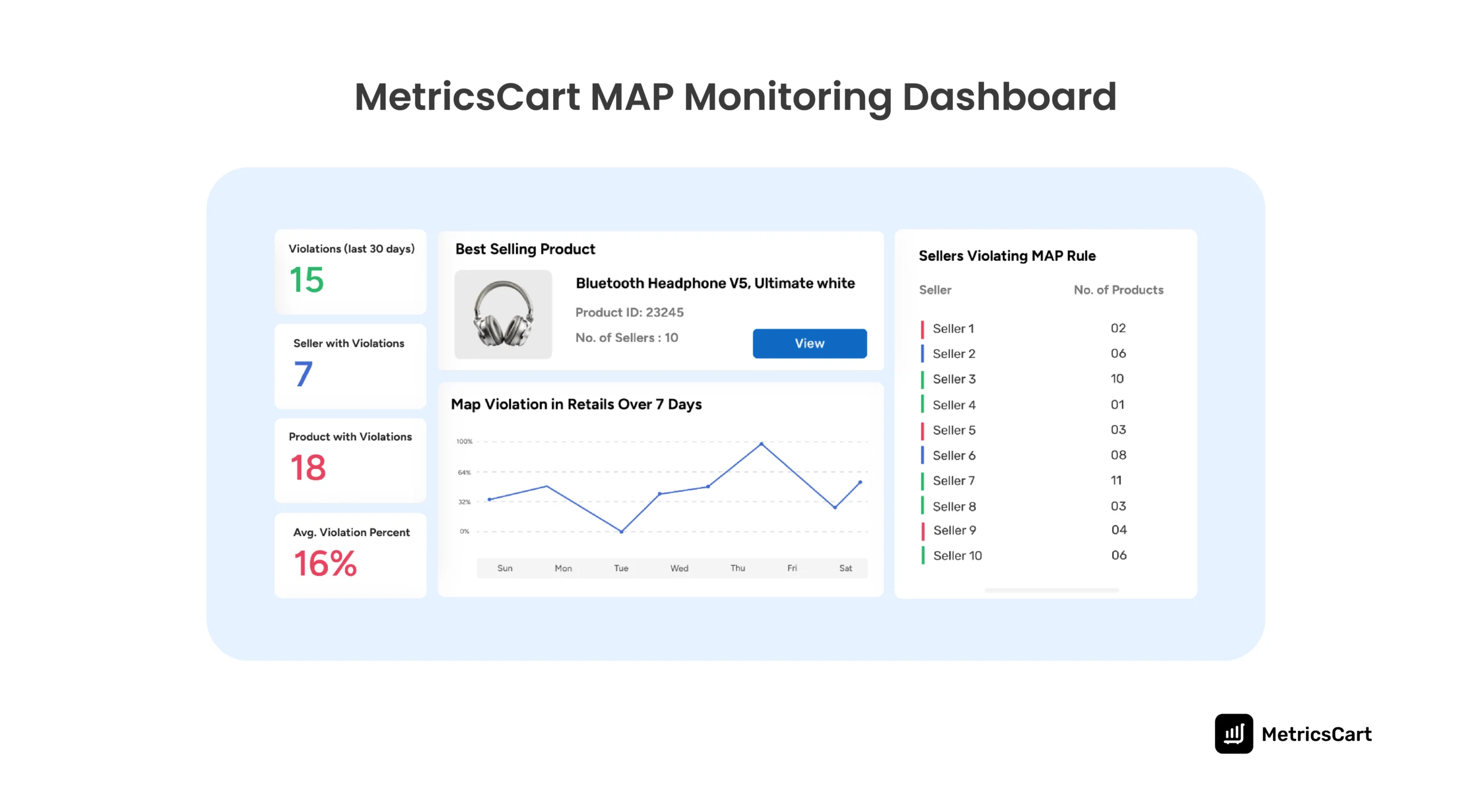
- Clear Seller Identification: Instantly distinguishes authorized from unauthorized sellers.
- Real-Time Violation Tracking: Monitors trends, violation rate, repeat offenders, and new product violations.
- Seller Compliance: Categorizes sellers based on MAP behavior for smart distribution network management.
- Buy Box Impact Analysis: Highlights revenue loss from violations that disrupt the Buy Box.
- Evidence Automation: Captures and stores violation screenshots for seamless enforcement and legal backup.
- Tiered Enforcement: Built-in targeted escalation: email notices, reminders, and final warnings; automated and backed by documented proof.
From real-time MAP violation detection and unauthorized reseller tracking to escalating enforcement, MetricsCart delivers end-to-end visibility, faster resolution, and smarter policy execution.
Closing the Loop on MAP Compliance Metrics
Most brands think MAP is a legal safeguard, but in practice, it is a pricing strategy discipline. Without the right metrics, MAP enforcement becomes reactive. You only intervene after value erosion has already taken place. The five MAP compliance tool metrics outlined above shift you from passive monitoring to predictive brand protection. Violation Rate tells you the size of the problem.
When you combine those signals, MAP stops being a dashboard of red flags and becomes a system of accountability across every seller, SKU, and marketplace. This is how premium brands maintain price integrity even in highly contested categories like beauty, electronics, CPG, and personal care, not by reacting to discounts, but by tracking the right enforcement intelligence early enough to prevent them from multiplying.
MetricsCart is purpose-built for that level of protection. It gives you real-time visibility, seller-level behavior tracking, and automated escalation, so MAP doesn’t remain a policy “on paper”. It becomes a standard enforced at scale.
The brands that win the pricing game are not the ones with the strictest MAP policy, but the ones with the clearest MAP signals and the fastest enforcement discipline.
Monitor and Act Before MAP Violations Erode Your Brand Trust.
FAQs
[/hide_in_toc]
MAP (Minimum Advertised Price) compliance ensures that resellers don’t advertise prices below a brand-defined threshold, preserving perceived value.
MAP is the lowest price a retailer can publicly advertise. MSRP (Manufacturer Suggested Retail Price) is a recommendation, not enforceable, for the final sale price.
A seller is MAP compliant if they list the product at or above the brand-defined MAP threshold in all public channels.
It’s the practice of using tools or services to track prices across online retailers and marketplaces in real time to detect MAP violations.
The top MAP compliance metrics include: Violation Rate, Time to Resolution (TTR), Number of Repeat Offenders, Retailer Compliance, and Margin at Risk.

